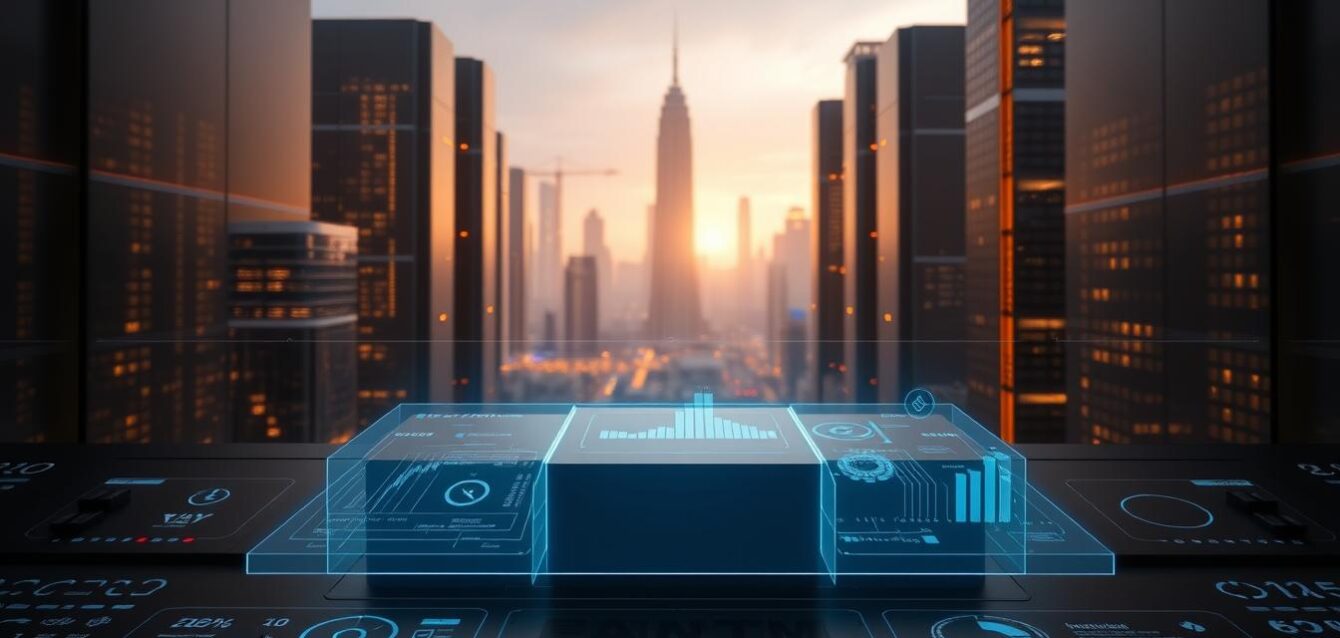Did you know that modern IT infrastructures generate over 100 times more data than just a few years ago? This huge increase in data is making old monitoring ways useless. Now, infrastructure observability is key to keeping systems reliable.
NuAura.Ai is leading this change, using autonomous reliability to change how we manage infrastructure. With AI, businesses can stop problems before they start, improve how things work, and keep everything running smoothly.
Key Takeaways
- Autonomous reliability is changing how we watch over infrastructure.
- AI helps prevent problems and makes things work better.
- NuAura.Ai is a big name in managing infrastructure on its own.
- Old ways of monitoring can’t keep up with the data explosion.
- Embracing autonomous reliability is essential for IT’s future.
The Evolving Landscape of Infrastructure Management
The world of infrastructure management is changing fast. This change is because we need better ways to watch over our systems. Old ways of monitoring just aren’t cutting it anymore.
IT teams are looking for new ways to see what’s going on and manage their systems better. They want to stay ahead of problems before they happen.
Current Challenges in Infrastructure Monitoring
Monitoring infrastructure is tough. We need to analyze data in real-time, spot oddities, and fix things before they break. But old tools often can’t keep up.
NuAura.Ai’s solutions aim to solve these problems. They use AI to make systems more reliable and easier to manage.
The Shift from Reactive to Proactive Approaches
We’re moving from just fixing things after they break to stopping problems before they start. This new way uses AI and machine learning to predict and prevent issues.
It’s all about being proactive. This change helps IT teams work smarter and keep systems running smoothly.
The Growing Complexity of Modern IT Ecosystems
Today’s IT systems are getting more complicated. They mix on-premises, cloud, and hybrid setups. This makes it hard to keep track of everything.
As things get more complex, we’ll need smarter, more autonomous solutions to keep up.
Why Autonomous Reliability Is the Future of Infrastructure Observability
Autonomous reliability is changing how we manage infrastructure. It offers a proactive solution to today’s IT challenges. As systems get more complex, we need a reliable, self-sustaining way to observe them.
Defining Autonomous Reliability in Modern Contexts
Autonomous reliability means systems can work well and spot problems on their own. This is thanks to AI and machine learning. They help predict and solve issues automatically.
The Convergence of AI and Infrastructure Management
AI in monitoring infrastructure is a big step forward. Machine learning algorithms are key. They help systems learn and get better over time.
Machine Learning Algorithms in Observability
Machine learning looks at lots of data from infrastructure. It finds patterns and oddities that might mean trouble. This lets us fix small problems before they get big.
Automated Decision-Making Processes
Systems can now fix problems without us. This cuts down on downtime and makes systems more reliable. It’s a big help in complex IT setups where we can’t always act fast.
Key Drivers Pushing the Industry Toward Autonomy
Several things are pushing us towards autonomous reliability. These include the growing complexity of IT, the need for quick monitoring, and wanting to save money. Companies like NuAura.Ai are leading the way with AI and machine learning solutions.
| Driver | Description | Impact |
|---|---|---|
| Increasing Complexity | Growing intricacy of IT ecosystems | Need for autonomous monitoring |
| Real-Time Monitoring | Need for immediate issue detection | Enhanced system reliability |
| Operational Costs | Desire to reduce costs associated with manual monitoring | Cost efficiency |
The Limitations of Traditional Observability Methods
Modern infrastructure is getting more complex. This makes traditional observability methods less effective. We need advanced solutions that can handle this complexity.
Manual Monitoring and Its Inefficiencies
Manual monitoring is slow and error-prone. It’s a lot of work and often reacts after problems start. This means issues are fixed late, when they could have been stopped earlier.
The Data Overload Problem
Old observability methods create too much data. This makes it hard to find useful information. It can even stop decision-making because of the data overload.
Inability to Scale with Business Growth
As businesses grow, their systems get more complex. Traditional methods can’t keep up. This leads to performance bottlenecks and resource constraints, hurting business efficiency.
Performance Bottlenecks
When systems can’t handle more load, they slow down or crash. Old observability methods often miss these problems in real-time, making things worse.
Resource Constraints
Businesses face challenges with human and tech resources using old methods. Without predictive analytics, resources are used reactively, not proactively.
| Limitation | Impact | Solution |
|---|---|---|
| Manual Monitoring | Prone to human error, reactive | Automated monitoring tools |
| Data Overload | Difficulty in identifying insights | Advanced data analytics |
| Inability to Scale | Performance bottlenecks, resource constraints | Scalable observability solutions |
Benefits of Implementing Autonomous Reliability Solutions
Autonomous reliability solutions change how we watch over our infrastructure. They use predictive analytics and prevent problems before they start. This makes it easier for companies to manage their operations better.
Predictive Analytics and Problem Prevention
Predictive analytics are key in autonomous reliability. They spot issues before they get big. This is done through:
Early Warning Systems
Early warning systems tell teams about possible problems. This lets them act fast. It cuts down on downtime and big outages.
Trend Analysis Capabilities
Trend analysis helps understand how systems have worked before. It guides teams in making smart choices. By looking at trends, companies can guess future problems and fix them before they happen.
Resource Optimization and Cost Efficiency
Autonomous reliability also saves resources and money. It automates checks and analysis, cutting down on manual work. This lowers costs. Plus, it makes infrastructure last longer, saving money on repairs and new parts.
Enhanced Security Through Continuous Monitoring
Continuous monitoring is a big part of autonomous reliability. It finds security risks as they happen. This lets teams act fast to protect the infrastructure.
Using autonomous reliability solutions makes businesses more secure and efficient. NuAura.Ai leads in this field, giving top-notch solutions. These help companies work better and prevent problems before they start.
NuAura.Ai: Pioneering the Autonomous Reliability Revolution
NuAura.Ai is leading the way in the autonomous reliability revolution. They are changing how companies manage their infrastructure. They use advanced AI and machine learning to redefine infrastructure observability.
How NuAura.Ai’s Technology Transforms Infrastructure Observability
NuAura.Ai’s solutions give real-time insights into IT systems. They help prevent problems and make the most of resources. Their tech boosts security by always watching for issues.
Real-World Success Stories and Implementation Examples
Many companies have seen big benefits from NuAura.Ai. For example, a top financial services firm cut downtime a lot. This shows how well NuAura.Ai’s strategy works.
Future Innovations on NuAura.Ai’s Roadmap
NuAura.Ai is always improving. They plan to make their AI platform even better. They will add more predictive analytics and better integration. This will keep them at the top of the autonomous reliability field.
As more businesses use autonomous reliability, NuAura.Ai will lead the change. They are shaping the future of infrastructure observability.
Conclusion: Embracing the Autonomous Future
The world of infrastructure management is changing fast. Now, embracing autonomous reliability is key for businesses to stay ahead. AI-driven solutions are the future, helping predict and prevent problems before they start.
NuAura.Ai is leading this change, changing how we manage infrastructure. It uses reliability automation to help businesses improve performance, cut costs, and boost security.
The move to autonomous reliability is all about being proactive. As IT systems get more complex, old ways of monitoring don’t work. NuAura.Ai’s new solutions solve these problems, making infrastructure management easier and more efficient.
Looking ahead, autonomous reliability will be vital for the future of infrastructure. With NuAura.Ai leading the way, companies can handle the challenges of modern infrastructure. This ensures a more reliable and efficient future for all.
FAQ
What is autonomous reliability in the context of infrastructure observability?
Autonomous reliability uses AI and machine learning to watch over infrastructure. It predicts and stops problems before they start. This ensures systems run smoothly and downtime is kept low.
How does autonomous reliability differ from traditional observability methods?
Traditional methods rely on manual checks and reacting to issues. Autonomous reliability uses AI to foresee and fix problems. It’s a more proactive and efficient way.
What role does NuAura.Ai play in the autonomous reliability revolution?
NuAura.Ai leads in autonomous reliability with its advanced AI solutions. It predicts issues, optimizes resources, and boosts system reliability. This transforms how we watch over infrastructure.
Can autonomous reliability solutions scale with business growth?
Yes, these solutions grow with your business. They adapt to the complexity of IT systems. This ensures performance stays top-notch as demands change.
How do machine learning algorithms contribute to autonomous reliability?
Machine learning is key in autonomous reliability. It analyzes big data to spot trends, predict problems, and make decisions. This boosts infrastructure reliability and performance.
What are the key benefits of implementing autonomous reliability solutions?
The main advantages are predictive analytics and stopping problems before they start. It also optimizes resources, saves costs, and improves security. This leads to better infrastructure management.
Are there any real-world examples of successful autonomous reliability implementations?
Yes, NuAura.Ai has shown its solutions work in real life. They’ve greatly improved infrastructure performance, reliability, and efficiency in various scenarios.




